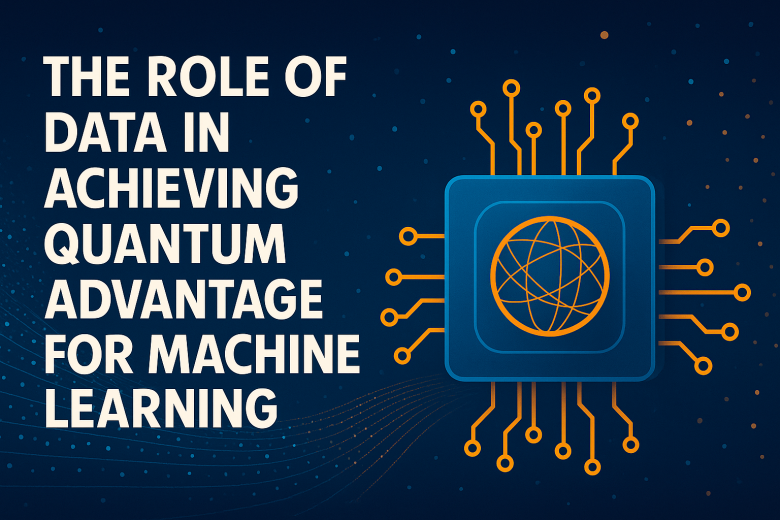Quantum computing is moving from theory to application—and nowhere is this shift more exciting than in machine learning. Quantum computers hold the potential to solve problems that are computationally intractable for classical systems.
Yet, achieving quantum advantage—a measurable benefit over classical systems—requires more than just powerful hardware. It depends heavily on the quality, structure, and availability of data.
In this article, we’ll explore the indispensable role data plays in unlocking quantum machine learning capabilities. We’ll also look at the latest breakthroughs like projected quantum kernels and how training in data science and engineering can prepare you for this next frontier.
Understanding the Intersection of Data and Quantum Power
To understand quantum machine learning (QML), we first need to understand computational complexity classes. Classical systems operate within BPP (Bounded-Error Probabilistic Polynomial Time), while quantum systems operate within BQP (Bounded-Error Quantum Polynomial Time).
But a new class emerges when machine learning enters the equation: BPP/Samp—a complexity class that allows classical computers to solve quantum-derived problems, only if given access to quality quantum-generated data.
That means even classical algorithms can exploit quantum insights—if trained with the right data. This puts data front and centre in the race for quantum advantage.
A Geometric Test for Quantum Learning Advantage
One of the most innovative methods to test for quantum advantage in learning tasks is through a geometric kernel framework. Here’s a simplified breakdown:
-
A dataset is embedded using a quantum process.
-
A kernel function captures geometric relationships in the data.
-
A geometric test then compares the quantum kernel to classical kernels.
This test not only helps validate if a quantum method offers a meaningful advantage but also estimates how much data is needed to bridge classical and quantum methods.
For those pursuing a career in data science, learning how to interpret and apply these geometric tests will become increasingly important. You can explore our Data Scientist Pathway to start building these capabilities.
Introducing the Projected Quantum Kernel
A known issue in quantum machine learning is overfitting—many models tend to memorise rather than generalise. This is where the Projected Quantum Kernel comes in:
-
It maps quantum features back to classical space
-
Reduces quantum resource overhead
-
Enables non-linear generalisation
-
Delivers higher performance with larger datasets
This hybrid technique demonstrates the synergy of classical and quantum methods—and underscores how vital data literacy is for future quantum professionals.
Explore courses like Microsoft Azure Data Fundamentals (DP-900) and PL-300 Power BI Data Analyst to gain strong data foundations.
Classical Success from Quantum-Origin Data
Interestingly, many machine learning problems stemming from quantum systems can be solved using classical algorithms—if you have enough well-structured data.
That’s why data engineering becomes critical. Without reliable pipelines, accurate labelling, and good feature extraction, even the most advanced quantum model will underperform.
Our Data Engineering Pathway teaches you to build resilient systems that deliver usable data—perfect for both quantum and classical use cases.
When Quantum Advantage Truly Shines
While classical methods can often perform well, there are engineered problems where quantum clearly outperforms—especially as datasets scale. TensorFlow Quantum now supports simulation experiments using up to 30 qubits, enabling:
-
Scalability of real-world QML tasks
-
Robust simulations of quantum learning algorithms
-
Advanced comparisons between classical and quantum performance
Preparing to work in this field means gaining fluency in frameworks like TensorFlow, and understanding data architecture at scale. Explore training for cloud-based tools like Azure AI Fundamentals (AI-900) to get started.
Why Data Training Matters More Than Ever
With AI, ML, and quantum computing colliding into a new era, demand is exploding for professionals who can handle data expertly—not just wrangle it, but understand its context, apply it effectively, and optimise its structure.
Whether you want to become a data analyst, data engineer, or data scientist, Robust IT Training can help:
-
Data Analyst Course: Focused on extracting value from structured and unstructured data.
-
Data Science Pathway: Learn the end-to-end process of analysing, modelling, and deploying data solutions.
-
Data Engineering Pathway: Master the architecture of modern data systems.
All our courses offer the flexibility to learn data online, allowing you to upskill on your schedule.
Internal Links to Boost Your Data Career
Here are a few additional pathways and course pages you may want to explore if you’re aiming for a future in data and quantum technologies:
-
Contact Us for course recommendations
-
Finance Options to help fund your studies
-
Success Stories from previous learners
-
Recorded Sessions to catch up on learning anytime
Conclusion: Data Is the Gateway to Quantum
Quantum advantage isn’t just about faster algorithms or exotic qubits—it’s about data. From quantum embedding geometry to projected kernels, the evidence is clear: better data means better learning outcomes.
If you want to thrive in tomorrow’s tech world, you’ll need a strong foundation in data systems, analytics, and engineering. At Robust IT Training, we equip you with exactly that.
Next Steps
✅ Visit www.robustittraining.com to explore our full data course catalogue
✅ Enrol in a data science course and prepare for the future of AI and quantum
✅ Sign up for our free data webinar every Monday at 6:15 PM via data-webinar.org
✅ Contact us for custom training options or career pathway advice
